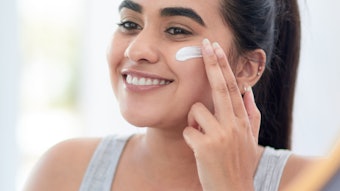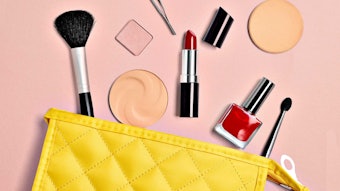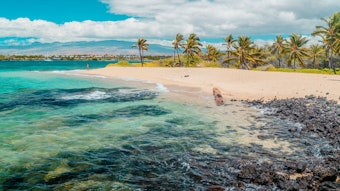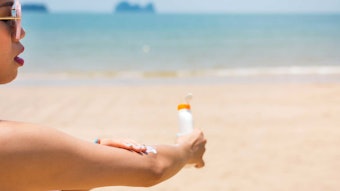After 18 years of writing for Cosmetics & Toiletries on cosmetic regulations, I decided to write this final column on how I think cosmetics should be regulated—referred to here as the Steinberg Administration. No one will agree with these propositions 100%, and many ideas will be controversial to regulators, industry and non-governmental organizations (NGOs), but this last column will hopefully stimulate some thought, intelligent discussion and possibly, change.
At a harmonization conference many years ago, a delegate from another country’s government asked me to write cosmetic regulations for her country. When I asked her why she wanted to regulate cosmetics, she replied because everyone else does. My advice for her was to copy someone else’s rules, and to think about why she wanted to regulate cosmetics. The next morning we met again, and her new reason for regulating cosmetics was to assure that those manufactured or imported into her country were safe. We agreed to work together, and 3-4 pages and a bill later, regulations were drafted.
The answer to why cosmetics must be regulated is the same today as it was back then—they must be safe. Cosmetic manufacturers also should only be allowed to make true and substantiated claims. While I fully believe in self-regulation with as few rules as possible and minimal government involvement and cost, the cosmetic industry needs good police to protect honest companies from companies who disregard the rules. To quote Edward Squibb, who proposed the formation of the U.S. Food and Drug Administration (FDA) in 1876, “This can only be accomplished by having penalties for violations, to be so severe that no one would ever think of not complying.”
Defining a Cosmetic
The 1938 Food, Drug and Cosmetic Act in the United States established a definition to distinguish between a cosmetic and a drug. The European Union (EU) also has a (more complex) definition. In fact, it’s likely that if one looks at any country, they will find an attempt to define cosmetics. However, none of them work as they are not easy to understand. This lack in understanding leads to difficulty in enforcement and compliance.
Under the Steinberg Administration, a cosmetic would be defined as one of the product types shown in the Acceptable Cosmetic Products sidebar. This would be a flexible list, to or from which products could be added or removed after a 30-day notice, allowing time for comments and for the regulatory body to change the definition for what constitutes a cosmetic. In relation, there would need to be ways to manage additions and delistings. Tattoos, for example, are included here since their purpose is generally cosmetic and they are applied to skin, but no one really knows how to regulate them. Is their inclusion warranted? Perhaps not, but no other ideas have yet been proposed. With the right management system in place, if a better solution was eventually identified, tattoos could then (potentially) be delisted.
Defining and Labeling Ingredients
Under the Steinberg Administration, cosmetic ingredients would be considered those that are listed in the latest edition of the International Cosmetic Ingredient Dictionary & Handbook. For example, “stearic acid” would be considered an ingredient rather than a mixture of fatty acids. The dictionary would also be revised to list mixtures of solutions. It is misleading on a product label to see Aloe barbadensis leaf juice as the first ingredient when it is 99% water, so the dictionary should clarify this.
Further, the ingredient list on a product label would include only ingredients and not materials added to them. For example, triethanolamine (TEA) is added to react with stearic acid to form TEA stearate. Thus, the term TEA stearate would go on the product label. If excess TEA or stearic acid were present, those would be listed separately on the label.
Mixtures of chemicals that form ingredients cause major labeling confusion, and this would be clarified to keep everyone on the same page. No chemical should be listed on a product label if it is present in the formulation at 0.01% or less. The exception is if that ingredient has proven functionality below this level. If methylparaben is used to preserve a mixture and is present at 0.005%, it would not go on the label since it has no activity at that low level. The reverse is true for methylchloroisothiazolinone at the same level, since it does function as a preservative at this low level. This would apply to botanical extracts, too. If an extract is 99% water and 1% extract, and is used at 0.1%, the manufacturer would need to prove it is doing something at this low level or it could not be listed on the label.
Also, the INCI name Alcohol Denatured would be abolished, along with SD alcohol numbers. All denatured alcohol should be labeled with the word alcohol and as part of the label, the denaturant(s) should be listed.
Advertising claims in ingredient listings would be forbidden as well. No more vitamin, purified, natural or organic claims would be allowed, and manufacturers that include them would face penalties.
Finally, the listing of fragrance allergens would not be permitted unless these were added as individual chemicals—not as part of a flavor, fragrance or essential oils. So far, listing the 26 allergens has accomplished nothing for safety. If a product is potentially unsafe due to the presence of these allergens, a warning should be included stating, “You may be allergic to the fragrance or flavor. If redness occurs, discontinue use.”
Permissible Ingredients
Cosmetic formulators should be able to use any ingredient they desire. This means there would be no positive list of colors, UV filters or preservatives, as well as no prohibited or restricted ingredients. The caveat would be that their cosmetics must be proven safe. If an ingredient makes a product unsafe, the formulation must be changed to make it safe, or the unsafe ingredient removed. This makes life simpler.
Consider nail polishes. Nothing penetrates the nail, so why not allow any color? Instead, many countries lump nail polishes together with leave-on, rinse-off, eye area, mucosa membrane, and so on product applications, and restrict which colors may be used in them. In contrast, there is no enforcement for using polyethylene terephthalate (PET) glitter for coloring nails. In fact, enclosing a dye or pigment in plastic—i.e., polish, changes its safety profile. With this rationale, any color in nail polish should be permissible.
Also, years have been spent trying to get new UV filters approved. If a chemical works and its safety is substantiated, why is there a need for a permitted list? And what about the “non-preservative” preservatives being developed? They are likely the result of countries requiring immense amounts of safety data in order to place a preservative on their positive list. If the required (and exhaustive) safety testing and review really works, then why do regulators allow NGOs to call some preservatives unsafe? Finally, consider ingredients that are used to bleach the skin. These so-called skin brighteners are not on the positive or restricted list.
Cosmetic formulators are completely capable and motivated to make products that are both effective and safe. Therefore, if the commercialization of unsafe products is swiftly and severely punished, why not let formulators use anything as long as the end product is safe and the product claims are substantiated?
Cosmetic Registration
Under the Steinberg Administration, every company that places a cosmetic on the market, i.e. “seller,” must be registered. The company responsible therefore would have its full name and address on the label. Further, any company not on the label that manufacturers or packages the cosmetic also must be known, i.e. “manufacturer.” While this may have been a difficult task in decades past, it is a no-brainer in the age of the Internet and computers. Therefore, all that would be required is the name and address for the label, the seller’s contact information and a small fee, say $100, to cover maintaining the database. When completed, the company would receive its unique ID number, which must be clearly legible on all products on both the principle display packaging (PDP) and any other packaging. This fee would be renewed annually.
The manufacturer, if different from the seller, would have a similar form and fee but would need to list all companies for which they are making products and their respective identification numbers. The manufacturer would also receive an ID number but preceded by a letter to indicate they are not the seller.
The seller would need to obtain the manufacturer’s ID before registering products. After everyone has registered, the seller would fill out a second form listing the trade name of the product to be sold; its type (see Acceptable Cosmetic Products) and all its ingredients; the ID of the manufacturer; and all countries where the product will be sold. A drop-down list would make this easy. Again, this information would require updating with any changes and/or annually.
A central database would make registration forms available to anyone but the information contained therein would only be accessed by regulators. This approach would allow regulators to quickly contact a seller if issues arise. It also would indicate who to penalize for failure to comply—all while protecting the confidentiality of this information.
In conjunction, a public view of the database or second database would be established whereby any consumer could confidentially report adverse reactions to products. Information included in their report would be the ID number of the seller, when and how the product was used, and the adverse reaction, as chosen from a drop-down list of non-serious to serious reactions. Ideally, all adverse reactions would be reported, even by a doctor or emergency room, and no adverse reactions would go unreported as a result of a settlement, such as from a lawsuit with the seller. A common mantra of the cosmetics industry is: there are far fewer serious adverse reactions to cosmetics than anything else the FDA regulates. This may or may not be true. All the injury cases I have seen as an expert witness resulted in non-disclosure clauses, so the FDA really has no idea of the number of serious adverse reactions. By reporting anonymously to an independent site, however, all officials would have access to see if there are problems with a product.
Managing this database is where the problems would arise, and where a small, independent company could be very helpful. Collecting information from forms is not a difficult procedure, and a large bureaucracy is not needed to run it; all that is needed is computer skills, the ability to set up programs, and the ability to maintain regular contact with participating governments. Questions of safety and claims substantiation could even be outsourced. The collection of fines would be performed by the seller’s country of origin. The use of language translation would also be important. Finally, within one month of introducing a cosmetic to the market, a Poison Control Notification would be made available to every country worldwide.
Cosmetic Labeling
Regarding a product label, under the Steinberg Administration, some information would be required, some optional and some prohibited.
Required information
a. On the PDP, the seller would identify the name of the product and type, chosen from the Acceptable Cosmetic Products list. Net contents would be listed in metric units only; consumers buy by the size of the package, not the amount. This would impact just the United States, Liberia and Myanmar—the only countries still using the English system of weights and measurements.
b. The name of the seller, their complete address and their ID number must be provided. If an “800” phone number is on the label, it must be toll-free worldwide.
c. The statement: “Please report any adverse reaction to this product” must be included on the label, along with the correct website, which would be accessible by all major languages.
d. The ingredients on the label would be listed in descending order of predominance down to 1% and any order afterwards. Currently, in the United States, colors are permitted to be listed in a “May Contain” section; this same section is referred to as “+/-” in the EU, which under the Steinberg Administration, would replace “May Contain.” However, no country has resolved the issue of what ingredients should be allowed in this section. Its original purpose was to enable formulators to make minor adjustments to products to result in batches of the same color. This section was then expanded to allow a common base and then list the colors present in different shades; note that the United States currently does not allow carmine as a “May Contain” ingredient.
This has raised the question of what one can do if the color added consists of chemicals that are not considered colors. For example, titanated mica pigments are comprised of titanium dioxide and mica. While both of these pigments are recognized in the United States, mica is not considered a color pigment in the EU. This author therefore proposes that a “May Contain” ingredient should consist of colors and any additives that come with them. So if tin oxide is mixed with other colors to give special effects, it can be listed here. All coatings on pigments to create better aesthetics or ease their incorporation should also be listed here. Finally, using PET glitter would be allowed here but only if it lists the PET and all dyes that are encapsulated in the plastic.
e. Directions should be provided on how to use the product safely. This would include how frequently to apply it, if it is providing sun protection.
f. Warnings would be added if the product could impact the safety of the consumer. For example, if an exfoliating cosmetic makes the consumer more sensitive to sun damage, this would be included in the PDP. Also, any warning including actions to be taken if adverse reactions occur must be substantiated. For example, stating “flush with water if irritation occurs” must be supported by clinical data to show this would stop the irritation.
g. The lot or batch number and a “best when used by” date would be provided for all cosmetics; the current “Period After Opening” symbol and concept would not be used, mainly because the consumer does not remember when they opened a product.
h. This author would keep the current symbol of a hand pointing to the open book, which is used in the EU. This tells the consumer to look elsewhere for information that is not on the label due to the lack of space. The symbol would also indicate websites to access more information in all the major languages; however, warnings and directions for reporting adverse reactions would remain on the PDP.
i. The tube, bottle, etc., packed in an outer carton would include the product name, full address, warnings, lot number and “best when used by” date.
Prohibited Information
a. There is nothing more bewildering on labels than the term “Country of Origin,” which would be removed from the label. It no longer has meaning since ingredients, packaging, production and final assembly take place globally.
b. Labeling would prohibit the use of claims such as “not tested on animals” and “cruelty-free” because these statements are simply untrue; ingredients have been tested on animals to confirm the safety of cosmetics, drugs, food and the environment. Water has even been tested on animals, so banning animal-tested ingredients does not make sense.
c. The claim “dermatologist-tested” or any other doctor-tested or -developed would be prohibited. This statement suggests a product is safe because of who tested or developed it. Since every cosmetic must be safe no matter who tested or developed it, this claim would not be permitted.
d. Like in Canada and the EU, the free-from claim would be prohibited since it is industry-destructive. This claim infers that certain ingredients are not safe and that the free-from product is safer because it does not include them.
e. The use of percentage claims is almost always seen as false and misleading, so they would be prohibited. The consumer often expects to fall into that percentage and achieve the same results.
f. Proposition 65 ingredient warnings would also be omitted. These are false and misleading since cosmetics must be safe. Any state or country requiring such a label is only scaring the public when no safety issues exist.
Penalties
As stated, the penalties for violating safety regulations must be so severe that no company would violate them. For the first violation, under the Steinberg Administration, the product would be recalled from the market, given a fine of $1,000 per product placed on the market in violation of these regulations, and a 30-day jail sentence for the CEO of the seller’s company. A second offense within five years of the first would result in all products being withdrawn from the market, a fine of $1,000 per product on the market, and a one-year suspension of the company’s ID, preventing the company from placing a product on the market for one year. Also, the CEO can contemplate how to re-enter the market as s/he spends one year in jail. The fines go to the country of the address on the label. If the violation occurred outside this country, the fine is split; 50% to the address country, and the balance divided evenly between all countries with the violation.
Comments
As promised in the beginning, this column will stir debate. Self-regulation works and is the easiest and cheapest way to be sure that cosmetics are safe and properly labeled, and that claims are substantiated. The penalties proposed here are so severe that no company would violate them.
As this is my last column, I must thank all the readers who have enjoyed and learned from my writings. I must thank Allured Business Media for putting up with all my mistakes, and sometimes lateness, while always being supportive. I never thought I could write a column for 18 years and still have regular readers, but to have reached this point is a true accomplishment. In Judaism, 18 is a special number that represents good luck, so good luck to all.










